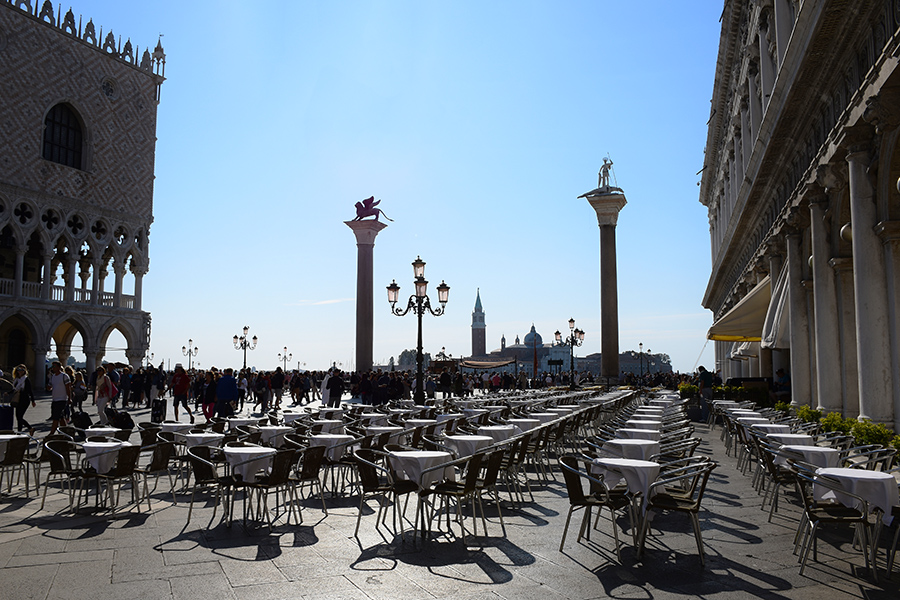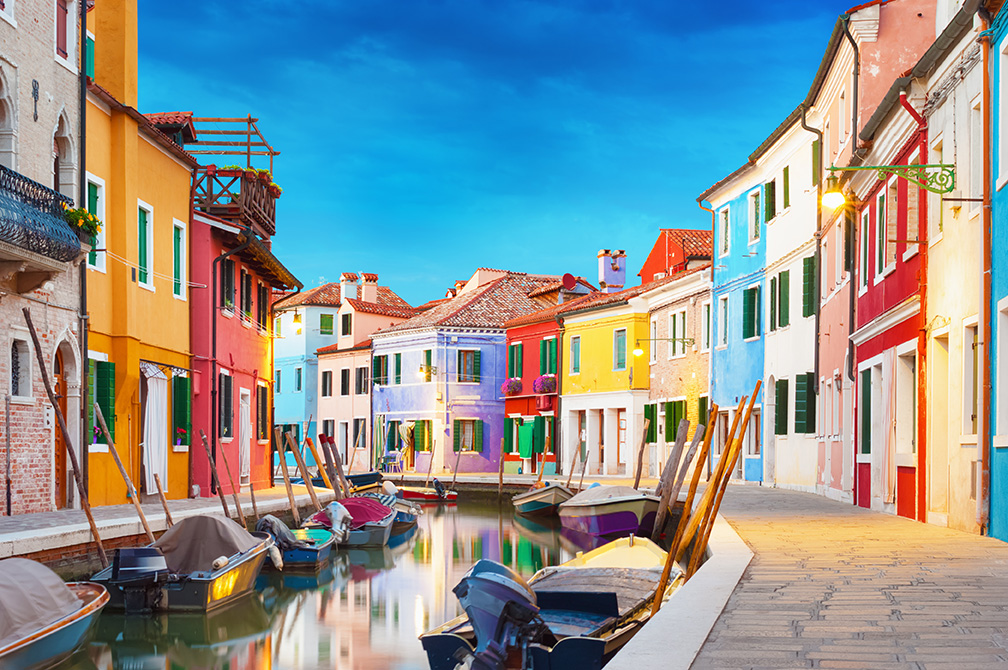In the Surroundings
What to do, what to see

Venice, the so called “Serenissima”
Venice is only 30 minutes far from Jesolo! This magical city is able to enchant you with its narrow streets crowded of the well-known artisans’ shops, with its canals and bridges: Piazza San Marco, Rialto and “Ponte dei Sospiri”, … every corner will remind you of its ancient air, made of history, magnificence, dances, duels and, why not? Maybe during the foggy evenings you may also come across Harlequin …
For art lovers, the Peggy Guggenheim Collection is well worth a visit! One of the most important museums in Italy for European and American art of the 20th century, based in Venice at Palazzo Venier dei Leoni, on the Grand Canal. The museum contains the personal collection of Peggy Guggenheim combined to the masterpieces of the Hannelore B. and Rudolph B. Schulhof Collection, the Nasher Sculpture Garden and temporary exhibitions.
Giudecca – the largest between the Venice islands and the closest to the historical centre – owes its name to the ancient presence of a Jewish community, once testified by the existence of two synagogues, now destroyed, and by the discovery of Jewish inscriptions on a stone in the area near the “Zitelle”.
This part of the City owes its name to the church of the same name: the construction of this historical building started in 1582 by Jacopo Bozzetto, on a project by Andrea Palladio, and was completed in 1586.
The church of the Redeemer, built in the 16th century to celebrate the liberation of the city from a terrible plague, is one of the greatest examples of Palladian sacred architecture. The interior, simple but imposing, is characterized by a Latin cross structure. There you can admire works by Tintoretto, Vivarini and Veronese. Overlooking the homonymous foundation, you can find Sant’Eufemia, an ancient church of Venetian Byzantine origin (9th century). Remodelled several times over the centuries, the original construction retains columns and capitals and the basilica layout.
On the island of Giudecca there is also the Molino Stucky, an interesting neo-Gothic style building where, in 1884 the industrialist Giovanni Stucky set the his mill.

Burano
Considered as one of the most colourful cities in the world, Burano is also one of the most beautiful islands in Venice with its brightly coloured houses and its ancient tradition of lace, still embroidered nowadays by the patient and expert inhabitants. The “Lace” Museum is a valid opportunity to discover this ancient artistic tradition.
Walking along the main canal, you arrive in Piazza Galuppi dedicated to the eighteenth-century composer, where you can admire an ancient well dating back to 1500 and the Church of San Martino, the only church on the island, with its characteristic leaning bell tower, determined by a partial collapse of the bases resting on the stilts.
Anyway, the best way to discover this wonderful island is to get lost in it, among its canals, its colourful and particular houses, its characteristic shops in which to buy doilies and embroidered fabrics.

Valdobbiadene and the Prosecco road
Together with Conegliano, Valdobbiadene City is an UNESCO World Heritage Site. It is the area of Treviso commonly known for the high number of vineyards and wineries, as well as being included in the circuit of the “Cities of Wine”.
From Cartizze to Spumanti DOCG, we recommend a journey through these territories that will lead you to appreciate Firms well known worldwide such as Astoria, Mionetto and Foss Marai, but also some “unknown to most” wine cellars definitely able to amaze you.
Our advice is to explore these hills, surrounded by both the colours and the flavours of this land that has a lot to offer.

Murano
In the heart of the Venetian lagoon, not far from Venice and its treasures, our guests may admire Murano and Burano islands.
Murano, consisting of nine islets joined by a large canal, has always been the centre of craftsmanship and home of blown glass. A centuries-old tradition of artistic glass processing has been handed down among the Murano people that nowadays are well known for the creation of objects such as plates, vases, jugs, etc…
Take the opportunity to admire their art and abilities directly inside the ancient factories present on the island. Art and design is what distinguishes the workshops and artisan shops where you can “find” real works of art.
A visit to the Glass Museum, born in 1861 in Fondamenta Marco Giustinian, is a must: here you will find a real historical archive on the life of the island and its traditions.
The “Golden Book” keeps the inscription of the Murano families who worked glass at that time and who gave birth to the most famous glass factories in the world.
Furthermore, in Murano it is possible to visit the Cathedral of Santa Maria and Donato, the most important church of the island dating back to the seventh century, and the church of San Pio Martire (16th century), with some Bellini and Tintoretto masterpieces and the Murano lighthouse, made of Istrian stone and located in the Fondamenta Francesco Maria Piave.

Roncade
This ancient city in the province of Treviso has a lot to offer visitors, starting from the Castle of Villa Giustinian, or “Castello di Roncade”, a majestic pre-Palladian Renaissance complex where you can taste typical wines produced in its vineyards.
But Roncade has many other hidden treasures consisting in spectacular villas (among them, we recommend Villa Ziliotto, Villa Morosini and Villa Grosso) and the Church of Ognissanti: an archpriest of 1566, whose magnificent neoclassical facade will literally leave you speechless. Inside the building, you can admire baroque stuccos and decorations inserted in a pictorial cycle created in the 1700s by acolytes of the Tiepolo school, together with the nave and a ceiling entirely painted by Girolamo Brusaferro.
Finally, we recommend you to visit the many wineries that are nearby, to be amazed by new and unexpected aromas and flavours.

Conegliano
Conegliano is not only characterized by the culture of “good wine”, but it is also a city to visit and offering unmissable views.
Headquarters of the Oenological School, a point of reference as regards oenology at national and international level, here it is possible to find the Manzoni Museum, an exhibition dedicated to the agronomist Luigi Manzoni: a collection of books, sketches and tools used in its 50 years of activity.
And what about the Castle of Conegliano, that overlooks the vineyards and the city offers visitors an unmissable view.
In the Cathedral of Conegliano, again, you can admire the altarpiece of the Madonna and Child painted by Gianbattista Cima, better known as Cima da Conegliano.
Conegliano, together with Valdobbiadene, was named a UNESCO World Heritage Site in 2019.





Follow Us
OUR SOCIAL MEDIA CHANNELS
Follow us on our social media to stay up to date with all the latest news, promotions and much more.